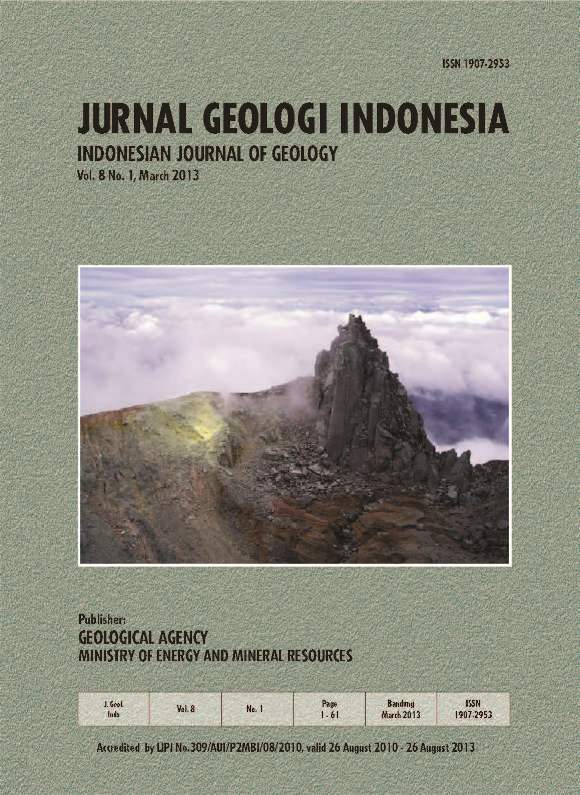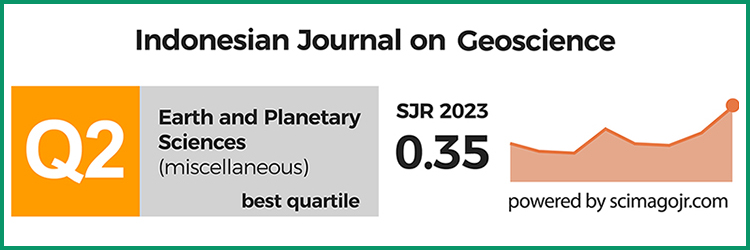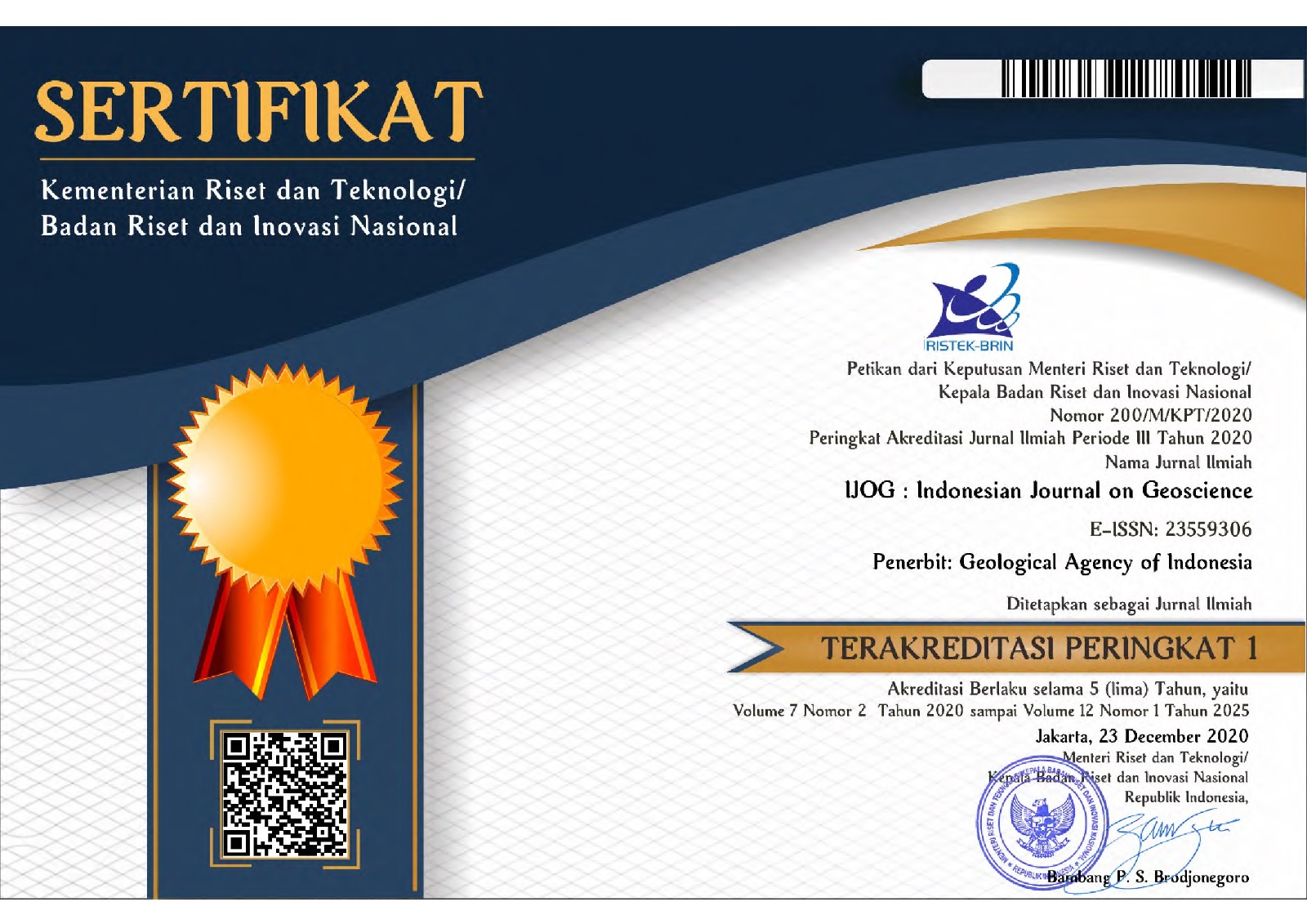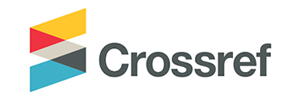The Potential of Eocene Shale of Nanggulan Formation as a Hydrocarbon Source Rock
DOI:
https://doi.org/10.17014/ijog.8.1.13-23Keywords:
potential, Eocene shale, hydrocarbon, source rock, maturity, NanggulanAbstract
In western Indonesia, Eocene shale is generally considered as a potential source rock. The Nanggulan Formation outcropping at Kulonprogo Yogyakarta consists of a shale interval of Eocene in age. Analysis of its organic material content, kerogen type, and maturity level were conducted to know its potential. The laboratory analysis of eleven samples were done to measure its TOC content. Samples with TOC > 0.5% then were analyzed to measure its Rv and TAI. Maturity level was also calculated by TTI from burial history model. The result of analysis shows there are various TOC contents and seven samples of them are categorized into a good-excellent class (TOC > 1%). Kerogen content of those samples is type III (non fluorescene amorphous-humic kerogen). One sample has a good indication of hydrocarbon formation (PY = 9.0 mg HC/g rock). Unfortunately thermal maturity level of the samples is immature (highest Rv 0.39, Tmax 422oC, and TAI 2). Otherwise, TTI calculation result from subsurface burial history modelling indicates that some areas are mature having reached gas window since 0.4 mya, especially in the area which had been influenced by a volcanic intrusion at Oligocene (28.5 mya). Therefore, the Nanggulan Formation shale has a potential capacity as a source rock with some limitation in maturity level.
References
Bordenave, M. L. (ed.), 1993. Applied Petroleum Geochemistry. Editions Technip, France, 524pp.
Espitalie, J., Deroo, G., and Marquis, F., 1985. La pyrolyse Rock-Eval et ses applications. Revue Institut Francais du Petrole, France, 40, p.563-579. doi:10.2516/ogst:1985035
Pertamina, 2008. G & G Regional Study- Southern of East Java. PT. Pertamina EP., Indonesia.
Peters, K.E., 1986. Guidelines for evaluating petroleum source rock using programmed pyrolysis. American Association of Petroleum Geologists, Bulletin, 70, p.318-329.
Rad, F. K., 1984. Quick Look Source Rock Evaluation By Pyrolysis Technique. Proceedings of 13th Annual Convention of Indonesian Petroleum Association, p.113-124.
Traverse, A., 1988. Paleopalynology. Allen and Unwin, 600pp.
Terres and Mertani, B., 1987. Terrestrial Heat Flow Map of Indonesian Basin. Proceedings of Indonesian Petroleum Association.
Tissot, B. P. and Welte, D. H., 1984. Petroleum Formation and Occurrence. Springer Verlag, 538pp. doi:10.1007/978-3-642-87813-8_24



















